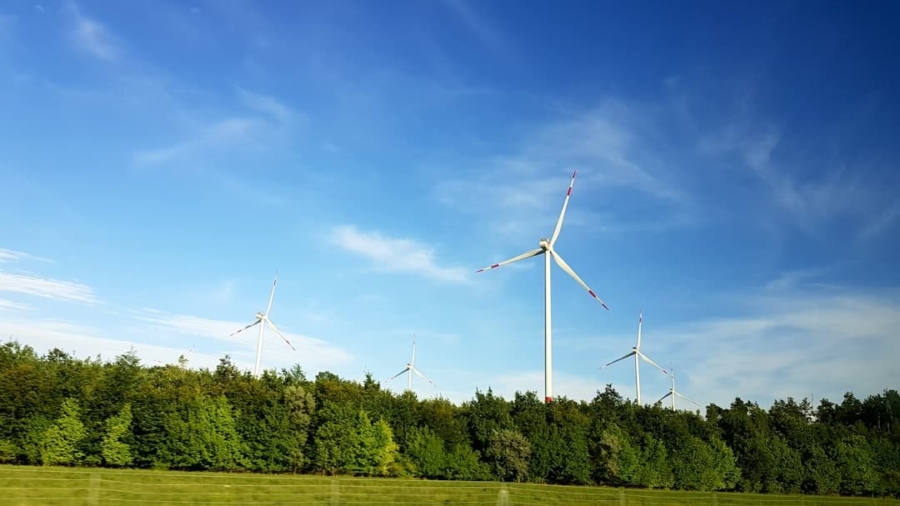The rapid advancement of artificial intelligence (AI) has brought about transformative changes across various sectors, from healthcare to finance, and even environmental conservation. However, this progress comes at a significant cost, particularly in terms of energy consumption and carbon emissions associated with model training. As AI models grow in complexity and size, the computational resources required for their training have surged, leading to an urgent need for sustainable practices within the field.
This is where Green AI frameworks come into play. These frameworks aim to mitigate the environmental impact of AI by promoting energy-efficient algorithms, optimizing resource usage, and fostering a culture of sustainability among researchers and practitioners. Green AI frameworks are not merely a response to the environmental challenges posed by traditional AI practices; they represent a paradigm shift in how we approach the development and deployment of AI technologies.
By integrating principles of sustainability into the AI lifecycle—from data collection and model training to deployment and maintenance—these frameworks encourage a holistic view of AI’s impact on the planet. The adoption of Green AI practices is essential not only for reducing carbon footprints but also for ensuring that the benefits of AI can be enjoyed without compromising the health of our environment for future generations.
Key Takeaways
- Green AI frameworks aim to reduce the environmental impact of model training emissions by optimizing energy usage and resource allocation.
- Model training emissions refer to the carbon footprint generated during the training of machine learning models, which can have a significant impact on the environment.
- The environmental impact of model training emissions includes contributions to climate change, resource depletion, and air and water pollution.
- Green AI frameworks reduce model training emissions by implementing energy-efficient algorithms, optimizing hardware usage, and utilizing renewable energy sources.
- Case studies demonstrate successful implementation of green AI frameworks, resulting in significant reductions in carbon emissions and energy consumption.
Understanding Model Training Emissions
Model training emissions refer to the greenhouse gases released during the process of training machine learning models, particularly deep learning models that require substantial computational power. The training phase involves running numerous iterations over large datasets, which necessitates the use of powerful hardware such as Graphics Processing Units (GPUs) or Tensor Processing Units (TPUs). These devices consume significant amounts of electricity, and if that electricity is sourced from fossil fuels, it results in considerable carbon emissions.
Research has shown that training a single large AI model can emit as much carbon as five cars over their lifetimes, highlighting the urgent need for awareness and action in this area. The emissions associated with model training can be broken down into several components. First, there is the direct energy consumption of the hardware used during training.
Second, there are emissions related to cooling systems required to maintain optimal operating temperatures for these devices. Third, the infrastructure supporting data centers—such as networking equipment and storage systems—also contributes to overall emissions. Understanding these components is crucial for developing effective strategies to reduce the carbon footprint of AI model training.
The Impact of Model Training Emissions on the Environment

The environmental impact of model training emissions extends beyond mere numbers; it has far-reaching consequences for climate change and ecological balance. As AI continues to proliferate across industries, the cumulative emissions from model training can significantly contribute to global warming. The energy-intensive nature of training large models means that as more organizations adopt AI technologies, the demand for energy will increase, potentially leading to higher carbon emissions unless sustainable practices are implemented.
Moreover, the environmental implications are not uniform across regions. In areas where electricity generation relies heavily on coal or other fossil fuels, the carbon footprint of AI model training can be particularly severe. This disparity raises ethical questions about equity in technology access and development.
Countries with cleaner energy sources may have a competitive advantage in deploying AI technologies sustainably, while those reliant on fossil fuels may face greater challenges. This uneven landscape underscores the importance of adopting Green AI frameworks that prioritize energy efficiency and sustainability across all regions.
How Green AI Frameworks are Reducing Model Training Emissions
Green AI frameworks employ a variety of strategies to reduce model training emissions effectively. One prominent approach is the optimization of algorithms to enhance their efficiency. By developing models that require fewer parameters or less data for training, researchers can significantly decrease the computational resources needed.
Techniques such as knowledge distillation, where a smaller model learns from a larger one, can also help in achieving similar performance with reduced energy consumption.
This includes using energy-efficient processors and optimizing data center operations to minimize energy waste.
For instance, some organizations are investing in renewable energy sources to power their data centers, thereby reducing their reliance on fossil fuels and lowering their overall carbon footprint. Additionally, advancements in hardware design, such as specialized chips designed for specific tasks, can lead to more efficient processing and reduced energy consumption during model training.
Case Studies of Successful Implementation
Several organizations have successfully implemented Green AI frameworks, demonstrating their effectiveness in reducing model training emissions while maintaining high performance levels. One notable example is Google’s use of machine learning to optimize its data center operations. By employing AI algorithms to manage cooling systems dynamically based on real-time data, Google has achieved significant reductions in energy consumption—reportedly by up to 30%.
This not only lowers operational costs but also minimizes the environmental impact associated with running large-scale data centers. Another compelling case study comes from OpenAI, which has made strides in developing more efficient models through techniques like sparse neural networks and pruning methods that reduce unnecessary parameters without sacrificing performance. By focusing on creating models that are both powerful and resource-efficient, OpenAI exemplifies how organizations can align their technological advancements with sustainability goals.
These case studies highlight that adopting Green AI frameworks is not just feasible but can also lead to innovative breakthroughs that benefit both businesses and the environment.
Challenges and Limitations of Green AI Frameworks

Despite the promising potential of Green AI frameworks, several challenges and limitations hinder their widespread adoption. One significant barrier is the lack of standardized metrics for measuring the environmental impact of AI models. Without universally accepted benchmarks, it becomes difficult for organizations to assess their progress or compare their efforts against others in the industry.
This ambiguity can lead to greenwashing—where companies claim to be environmentally friendly without substantial evidence or action backing those claims. Additionally, there is often a trade-off between model performance and energy efficiency. Many state-of-the-art models achieve their high accuracy through extensive training on large datasets, which inherently requires significant computational resources.
Researchers may face pressure to prioritize performance over sustainability, especially in competitive environments where achieving top results is paramount. Balancing these competing priorities remains a critical challenge for those advocating for Green AI practices.
Future Outlook and Potential Developments
The future of Green AI frameworks appears promising as awareness grows regarding the environmental impact of AI technologies. Ongoing research into more efficient algorithms and hardware solutions will likely yield new methodologies that further reduce emissions associated with model training. Innovations such as federated learning—where models are trained across decentralized devices rather than centralized data centers—could also play a role in minimizing energy consumption by leveraging local resources more effectively.
Moreover, regulatory frameworks may emerge that incentivize sustainable practices within the AI industry. Governments and international organizations could implement policies that encourage companies to adopt greener technologies or provide funding for research into sustainable AI practices. As public concern about climate change continues to rise, there will likely be increased pressure on organizations to demonstrate their commitment to sustainability through transparent reporting and accountability measures.
Conclusion and Call to Action
The integration of Green AI frameworks into the development and deployment of artificial intelligence technologies is not merely an option; it is an imperative for ensuring a sustainable future. As we continue to harness the power of AI for various applications, we must also recognize our responsibility to mitigate its environmental impact. By adopting practices that prioritize energy efficiency and sustainability, we can pave the way for a more responsible approach to technological advancement.
This collective effort will not only help reduce model training emissions but also foster innovation that aligns with global sustainability goals. As we look ahead, let us commit to making conscious choices that reflect our dedication to preserving our planet while advancing technology for the betterment of society.
In a related article, Best Laptops for Gaming, Enicomp explores the top laptops that are ideal for gaming enthusiasts. These powerful machines are designed to handle intensive graphics and processing demands, making them perfect for running AI frameworks efficiently. By choosing the right laptop for AI model training, users can minimize energy consumption and reduce emissions, contributing to a more sustainable computing environment.
FAQs
What are Green AI Frameworks?
Green AI frameworks are machine learning and deep learning frameworks that are designed to minimize the environmental impact of model training by reducing energy consumption and carbon emissions.
How do Green AI Frameworks minimize model training emissions?
Green AI frameworks achieve this by optimizing the use of computational resources, improving hardware efficiency, and implementing algorithms that require less energy to train models.
What are the benefits of using Green AI Frameworks?
Using Green AI frameworks can help reduce the carbon footprint of AI and machine learning projects, lower energy costs, and contribute to a more sustainable and environmentally friendly approach to technology development.
Which AI frameworks are considered to be “green”?
Some examples of AI frameworks that are considered to be “green” include TensorFlow, PyTorch, and JAX, which have implemented features and optimizations to reduce energy consumption during model training.
How can developers and organizations contribute to minimizing model training emissions?
Developers and organizations can contribute to minimizing model training emissions by adopting best practices for energy-efficient model training, optimizing hardware usage, and supporting the development and adoption of Green AI frameworks.

